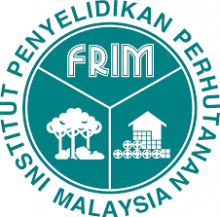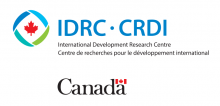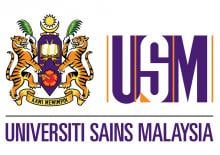Science
News

16 Dec 2007
Summaries of newsworthy papers in Nature research journals including: Meteoritic boost to biodiversity?, In the right direction, Silicon nanowires stay current, Genetic risk factor for ALS, Genetic susceptibility to Kawasaki disease, A pathway controlling body temperature, and Control of EGFR in breast cancer cell invasion

16 Dec 2007
Conservation of these forest genetic resources is the best means to guarantee their availability for the use of present and future generations. Therefore, information on population genetics of forest plant species is essential for the successful implementation of conservation and tree improvement programmes.

16 Dec 2007
This paper highlights the research into developing conservation strategies, curbing illegal logging through forensic forestry, developing forest conservation strategies using molecular marker technology, molecular breeding to advance the breeding of specific traits, in vitro conservation of plant species and new drug discovery programs.

16 Dec 2007
Bio-deterioration of wood products by micro-organisms and insects is a major problem. The current trend in the development of wood preservatives is to use biocide combinations which include both inorganic-organic and organic-organic binary mixtures.

16 Dec 2007
Results from the early work on the Malaysian red list and conservation monitoring on critically threatened plant species provide a perspective into the underlying issues of conservation priorities.

14 Dec 2007
Japanese biologists identify a protein critical to the normal development of the embryonic brain

14 Dec 2007
RIKEN researchers are learning how to electrically control spin orientation for data storage technology
photo

14 Dec 2007
A team of scientists shows how to electrically control the polarization of nuclear spins

12 Dec 2007
Summaries of newsworthy papers including: Mammals: Patterns of evolution, Remote control of tropical cyclones, A rotating ring current around Saturn, Fathoming giant rogue waves, Books: Seasonal kids' special, A gallery of protein pumps, Space: Halo halo, New compound comes out of the cool, and Why pregnant women don’t tip over

12 Dec 2007
Homosexual men in China who seek sexual partners both on the Internet and in venues that traditionally attract homosexuals are at the highest risk of HIV transmission

12 Dec 2007
Recommend roadmap based on flexible, universally compatible technologies for good governance and achievement of the Millennium Development Goals.

10 Dec 2007
At the Third Global Knowledge Forum (GK3), Canada’s International Development Research Centre (IDRC) and its research partners will be showcasing some of the innovative ways in which ICTs can foster human development. The GK3 will take place in Kuala Lumpur, Malaysia, December 11-13, 2007

10 Dec 2007
Ottawa, Canada, December 10, 2007 – Recognizing the serious consequences of climate change for development, the International Development Research Centre (IDRC) is helping developing countries adapt by supporting research and strengthening local institutions so they can better prepare for an uncertain future.

09 Dec 2007
Summaries of newsworthy papers including: Complementing IPCC, Cooling the Cretaceous greenhouse, The pulse of the San Andreas, Re-examining firefly bioluminescence, Silicon nanowires restore optical signals, How protein modules fit together, Compact synchrotron demonstrated, Pathway to breast cancer, You must remember this & Romancing the fly

07 Dec 2007
Superconductivity is found to be strengthened by a competing order of electrons

07 Dec 2007
The first wave of cells giving rise to an early stem cell population are derived from cells of the neural tube

07 Dec 2007
Discovering the structure of a key protein in human cells may lead to treatment for asthma and shock

06 Dec 2007
Richard Fuchs believes that people who want to understand how the world is changing should look to the wave of transformation that is sweeping across Asia.

06 Dec 2007
The International Development Research Centre (IDRC) and the Canada Research Chairs Program are launching an initiative to pair leading researchers from universities in Canada with those in developing countries to collaborate on issues of mutual concern.

05 Dec 2007
Summaries of newsworthy papers including: Tracking volcanic activity on the Moon, Space: How close is too close? Joined-up thinking on bird flu, Cancer: A double agent exposed, Cinderella science, A quantum-dot light switch, Ancient magma ocean under Earth's mantle?, Snowball versus slushball, Are you a man or a mouse?

05 Dec 2007
On November 22, 2007, the Tokyo University of Science and Brunel University of the United Kingdom signed an academic exchange agreement.

05 Dec 2007
90% of the Earthʼs freshwater is locked up in the great Ice Sheets of Greenland and
Antarctica. On December 13th, 2007, the International Polar Year (IPY) will launch its second 'International Polar Day', focussing on Ice Sheets and Traverses.

05 Dec 2007
China's rapid economic development has accelerated biological invasion and more from Nature China this week

04 Dec 2007
Bali is not the only island that will be hosting a climate change conference this week. Second Nature, Nature Publishing Group’s (NPG) archipelago in Second Life, will host a series of talks to coincide with the UN climate change conference.

04 Dec 2007
The work of rice researchers has received major encouragement as 2007 comes to a close, with staff at the International Rice Research Institute (IRRI) and their colleagues receiving widespread recognition and several major awards.

04 Dec 2007
The Nepal Academy of Science and Technology awarded the Local Initiatives for Biodiversity, Research and Development (LI-BIRD) this award for their outstanding contribution to the promotion of science and technology for the benefit of the people in Nepal.

04 Dec 2007
Penang, Malaysia - University Science Malaysia once again boosted the name of the country when seven of its researchers successfully won three gold medals and four silver medals, together with a special award at an international event.

02 Dec 2007
Summaries of newsworthy papers in Nature Geoscience including: In search of a plate boundary and Modern Arctic Ocean circulation exceptional?

02 Dec 2007
Summaries of newsworthy papers in Nature journals including: Restoring bacterial killing in cystic fibrosis, Bad to the bone, Run away from your depression, Genetic risk factor for psoriasis, Genetic variants predispose to lupus, and Fuelling allergic inflammation

02 Dec 2007
This is the first of a series of nine papers exploring the state of the science and practice of compensation and rewards for environmental services in the developing world.
Giants in history
Chinese biochemist Chi Che Wang (1894 - 1979), one of the first Chinese women to study abroad, advanced to prominent research positions at American institutions including the University of Chicago and the Northwestern University Medical School.
Ruby Sakae Hirose (1904 – 1960) was a Japanese-American scientist whose research contributed significantly to our understanding of blood clotting, allergies and cancer.
Chinese electron microscopy specialist Li Fanghua (6 January 1932 – 24 January 2020) facilitated the high-resolution imaging of crystal structures by eliminating interference.
Sálim Moizuddin Abdul Ali (12 November 1896 – 20 June 1987), commonly referred to as the Birdman of India, was the first person to conduct systematic surveys of birds from across India.
Haisako Koyama (1916 – 1997) was a Japanese solar observer whose dedication to recording sunspots – cooler parts of the sun’s surface that appear dark – produced a sunspot record of historic importance.
Michiaki Takahashi (17 February 1928 – 16 December 2013) was a Japanese virologist who developed the first chickenpox vaccine.
Toshiko Yuasa (11 December 1909 – 1 February 1980) was the first Japanese female physicist whose research on radioactivity shed light on beta decay – the process in which an atom emits a beta particle (electron) and turns into a different element.
Angelita Castro Kelly (1942-2015) was the first female Mission Operations Manager (MOM) of NASA. She spearheaded and supervised the Earth Observing System missions during its developmental stage.
Malaysia’s first astrophysicist, Mazlan binti Othman (born 11 December 1951) was instrumental in launching the country’s first microsatellite, and in sending Malaysia’s first astronaut, Sheikh Muszaphar Shukor, into space.
Known as Mr. Natural Rubber, chemist and researcher B. C. Shekhar (17 November 1929 – 6 September 2006) introduced a number of technical innovations that helped put Malaysia’s natural rubber industry on the world map.
Shinichiro Tomonaga (31 March 1906 – 8 July 1979), together with Richard Feynman and Julian Schwinger, was awarded the Nobel Prize in Physics in 1965, for their contributions to advance the field of quantum electrodynamics. Tomonaga was also a strong proponent of peace, who actively campaigned against the proliferation of nuclear weapons and promoted the peaceful use of nuclear energy.
South Korean theoretical physicist Daniel Chonghan Hong (3 March 1956 – 6 July 2002) achieved fame in the public sphere through his research into the physics of popcorn.
Japanese chemist Kenichi Fukui (4 October 1918 – 9 January 1998) was the first Asian scientist to be awarded the Nobel Prize in Chemistry. Together with Roald Hoffman, he received this honour in 1981 for his independent research into the mechanisms of chemical reactions.
Chinese palaeontologist, archaeologist and anthropologist Pei Wenzhong (January 19, 1904 – September 18, 1982) is regarded as a founder of Chinese anthropology.
Physicist Narinder Singh Kapany (31 October 1926 – 4 December 2020) pioneered the use of optical fibres to transmit images, and founded several optical technology companies. Born in Punjab, India, he worked at a local optical instruments factory before moving to London for PhD studies at Imperial College. There, he devised a flexible fibrescope to convey images along bundles of glass fibres.
Japanese physicist Ukichiro Nakaya (1900-1962) made the world’s first artificial snowflakes. He started his research on snow crystals in the early 1930s at Hokkaido University, where there is an unlimited supply of natural snow in winter. By taking over 3,000 photographs, he established a classification of natural snow crystals and described their relationship with weather conditions.
The field of solid-state ionics originated in Europe, but Takehiko Takahashi of Nagoya University in Japan was the first to coin the term ‘solid ionics’ in 1967. ‘Solid-state ionics’ first appeared in 1971 in another of his papers, and was likely a play on ‘solid-state electronics’, another rapidly growing field at the time.
Charles Kuen Kao (Nov. 4, 1933 to Sept. 23, 2018) was an engineer who is regarded as the father of fibre optics. His work in the 1960s on long distance signal transmission using very pure glass fibres revolutionized telecommunications, enabling innovations such as the Internet.
Chika Kuroda (24 March 1884 – 8 November 1968) was a Japanese chemist whose research focussed on the structures of natural pigments.
Motoo Kimura (13 November 1924 – 13 November 1994) was a Japanese theoretical population geneticist who is best remembered for developing the neutral theory of molecular evolution.
Meghnad Saha (6 October 1893 – 16 February 1956) was an Indian astrophysicist best known for formulating the Saha ionization equation which describes the chemical and physical properties of stars.
Sir Jagadish Chandra Bose (30 November 1858 – 23 November 1937) was a scientist and inventor who contributed to a wide range of scientific fields such as physics, botany and biology.
Osamu Shimomura (27 August 1928 – 19 October 2018) was a Japanese organic chemist and marine biologist who dedicated his career to understanding how organisms emitted light.
Subrahmanyan Chandrasekhar (19 October 1910 – 21 August 1995) was an Indian astrophysicist who studied the structure and evolution of stars.
Joo-myung Seok (November 13, 1908 – October 6, 1950) was a Korean butterfly entomologist who made important contributions to the taxonomy of the native butterfly species in Korea.
Mathematician Maryam Mirzakhani (12 May 1977 – 14 July 2017) was the first and only woman and Iranian to date to win the Fields Medal in 2014 for her work on curved surfaces.
Sir Chandrasekhara Venkata Raman (7 November 1888 – 21 November 1970) was an Indian physicist who performed ground-breaking research in the field of light-scattering.
Mohammad Abdus Salam (29 January 1926 – 21 November 1996) was a theoretical physicist and the first Pakistani to receive a Nobel Prize in science.
Srinivasa Ramanujan (22 December 1887 – 26 April 1920) was a math prodigy and widely considered one of India’s greatest mathematicians. Despite having almost no formal training in mathematics, he made substantial contributions to mathematical analysis, number theory, infinite series and continued fractions.
Gopalasamudram Narayanan Ramachandran (8 October 1922 – 7 April 2001) is best known for developing the Ramachandran plot to understand the structure of short chains of amino acids, known as peptides.
Hitoshi Kihara (1893 – 1986) was one of the most famous Japanese geneticists of the 20th century. One of his most significant contributions was identifying sex chromosomes (X and Y) in flowering plants.
Chien-Shiung Wu (31 May 1912 – 16 February 1997) was an experimental physicist who made several important contributions to nuclear physics. Wu worked on the Manhattan Project – a top-secret program for the production of nuclear weapons during World War II and helped to develop a process for separating uranium into U235 and U238.
Meemann Chang (born 17 April 1936) is a Chinese palaeontologist who studied the fossils of ancient fish to understand the evolution of life. By examining fossils, she uncovered new insights on how vertebrates, animals with a backbone, migrated from the sea and became adapted to live on land.
Bibha Chowdhuri (1913 – 2 June 1991) was an Indian physicist who researched on particle physics and cosmic rays. In 1936, she was the only female to complete a M.Sc. degree at the University of Calcutta.
Lin Lanying (7 February 1918 – 4 March 2003) was a Chinese material engineer remembered for her contributions to the field of semiconductor and aerospace materials. Lanying was born into a family who did not believe in educating girls and she was not allowed to go to school.
Japanese geochemist Katsuko Saruhashi developed the first method and tools for measuring carbon dioxide in seawater





































